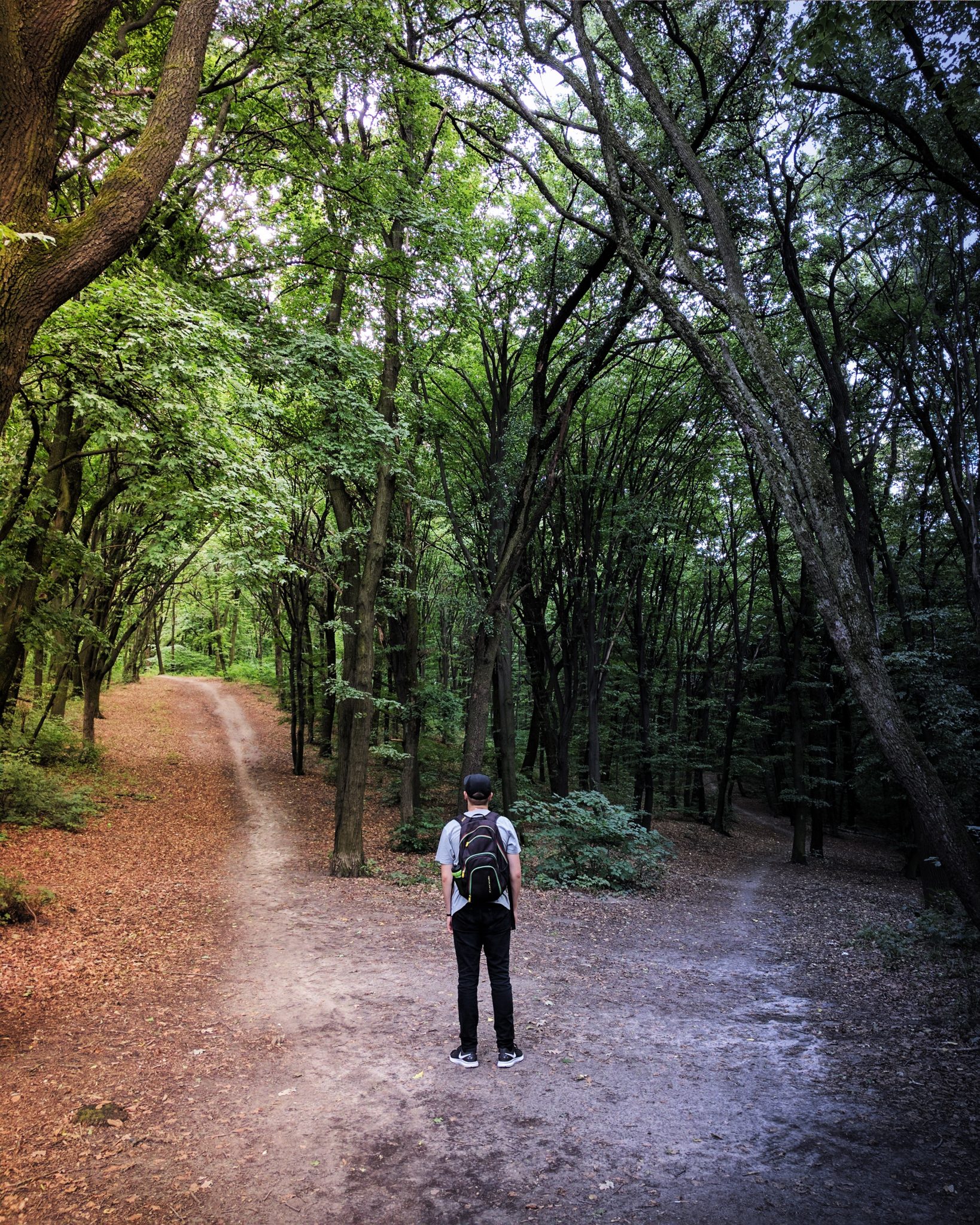Making decisions is something we do every day.
Some are choices between two simple alternatives, and some are more complex.
As we grow older, the stakes get higher. We get to decide where we will live, how many kids we will have, whether we will buy a house, whether that career path is the right one etc. The impact of these decisions can alter the course of our lives, and lead to happiness, success, or disappointment.
We all know friends, relatives or colleagues who appear to be very quick to make decisions. They open the menu at the restaurant and know what they want within seconds. They buy a house after a few talks with the agent, and without second thoughts.
On the other hand, you seem to take hours to order that 20€ gismo on Amazon. You don’t know which brand to choose, you’re confused by that particular angry comment from a previous buyer.
Investing into a new car? You’ve bought all the reviews at the newspaper stand, you know all the best websites to compare the models. You know that this car will consume more gas but will have a lower service cost. And still, you’re confused and can’t decide.
It’s a matter of personality
At the end, there seem to be two kinds of personalities. And neither of them is better than the other one.
In fact, your friend that rushed into a decision might have made a great deal, but may have missed a key information that would indicate that the purchase was a bad idea.
On the other hand, you may have waited too long to decide and the deal you were about to make is gone.
It’s important to note that both personalities are equally important when they balance each other out. It does not mean that you are flawed if you are a slow or fast decision maker.
What matters is the intensity of that trait of personality. When moderate, it will be an asset : making timely decisions with sufficient information is key.
However, if you are into an extreme slow or fast, it will play against you : you will miss some opportunities, or you might rush into a bad deal.
We all have a different threshold for certainty and risk tolerance
It all boils down to how much certainty you are comfortable with before making a decision.
Some of people are fine making a quick assessment and going forward. Others need time to carefully calculate, and control every detail of the plan.
It will not get easier with time
As we grow from teenager living with the parents to adult, we go from making unimportant decisions to key decisions.
And we are not taught in school how to do it. Our only references are our parents, or close friends.
And when we get older no one will teach you how to make better decisions, while the stakes are growing bigger. Should I accept the offer for that new job? Should I stop working and do that MBA? Should I sign up for that yoga class? Should I promote that employee?
What you can do to decide quicker and better
The good news is, billions of people have been in your position for thousands of years.
And there are always things that we can do to continuously improve our own decision making process.
Formalize the decision
The first thing that you can do is formalise the decision process.
Take a pen and paper, and put two columns: one for the pros and the other for the cons of each choice you’re having.
By formalizing the process, things get immediately easier. There is an almost magical aspect to the pen and paper (or you Excel sheet).
It helps make things clearer for you, and remove any uncertainties.
Somehow, in our mind, we struggle to understand the weight of each parameter. When we lay them on paper, each parameter is presented next to each other.
Rationalise the decision
Secondly, you need use relevant decision factors to decide. And each decision criterion has a different weight.
Perhaps the color of the car is less important than the price. Perhaps the cost of the maintenance is more important than the consumption.
You need to know which elements are important to your own situation.
The questions you need to ask yourself are:
- What information do I need in order to make a choice?
- Will I be happy making the decision after I have gathered that data?
- What are the worst things that can happen if I make that decision?
- Can I make the worst case less likely to happen?
By asking yourself these questions, you will not only know which information and criteria are important for making the decision, but also what kind of risk you are exposing yourself to.
What makes us worry about a decision is a subset of criteria.
For instance, we might be happy to buy the dream home, but in the back of our head, we keep thinking about the next financial crisis.
By knowing the likelihood of it happening, and the worst scenario that could happen, you suddenly realise that it is not such a disastrous problem.
You have a reserve of cash on a saving account to face difficulties, you have a strong job role that is unlikely to change if the crisis come, you have a very low mortgage monthly payment, you gave a unemployment insurance…
Consider the level of certainty you need before you start the investigation
Now there are cases whereby you will dig deeper into the problem for weeks, and never get to the decision part.
Before you start the decision process, you need to ask yourself : what is the minimum level of information that I will need to make the decision?
When you know the key criteria, you split the decision process into two parts:
- The thinking part: deciding what information and criteria you’ll use, and the relative importance of the criteria
- The action part: gathering the data and reaching the answer.
By splitting this process into two parts, you ensure that only your rational part will participate into the decision making.
Listen to your intuition
Sometimes, we go about looking for information for months to justify ourselves that a certain decision is the right one.
But deep inside, we don’t want to accept it. Our gut feeling is telling us that it’s not the right thing to do.
Our subconscious is extremely powerful and underestimated. You rational mind will miss subtle details that your subconscious brain won’t.
Once you have the results of your rational analysis, ask yourself : does it feel right?
If not, you might just be rushing into something that makes sense rationally but that you won’t be happy with once the decision is made.
Train to take decision when the stakes are low
The previous sections were mainly focused on structuring a decision process. It is especially appropriate for important, critical decisions.
However, it is important to improve our psychology and train our mind to make faster decisions.
Regardless if it is to buy a shirt or a house, at the end of the day, you need to pull the trigger. And no matter how structured your decision process is, you will need to get it done.
The best advice is then to use low stakes opportunities to train your ability to decide and be happy with it.
Here are some examples:
- If you are at the restaurant, quickly browse the menu and make a decision within 30 seconds of receiving it,
- If you need to order something online, browse for a limited amount of time, and just buy in 5 minutes when you have found the 3 best alternatives,
- If you go to the supermarket and get confused with 10 alternatives of the same product, just pick one within 30 seconds.
When you train on seemingly low criticality decisions, you will quickly realize that we feel better when the decision is out of our mind. And that the choices we had were not that important after all.
When you get the pleasure of deciding fast, you enjoy the lower burden on your mind. And the lower the number of decisions you have to make, the happier you get.
Talk to people who have done it successfully before
One way to make quicker and better decisions, is to ask people who have been in your situation before.
They know what criteria are important, so you don’t lose time on poor criteria and miss the ones that matter.
Read from experts in the field of the decision
In some cases, the people around you didn’t successfully go through the decision you’re having to make.
You won’t reinvent the wheel. Dozens of authors of books and articles will have covered it already.
Just look for different sources so you can better trust the information you’re having, and make your own choice thereafter.
Take it further
We’ve covered many aspects of the decision making process, but you may want to consider going deeper into the subtlety of that art.
Reversing a decision
Making better decision, is aiming to maximize the quality of the outcome, knowing that you can minimize the risk of being a bad decision.
One way to limit the risk of a bad decision and be more comfortable with it, is to ask yourself : can I go back on my decision and undo it? Is it reversible?
If by making the decision, you realize that you can go back if you’re unhappy with the choice, you will have less doubt about making the choice.
That’s the technique that e-commerce websites use to lower your decision threshold : they provide you with a 30-day money back guarantee.
Asymmetric risk
A variant of the previous section is the notion of asymmetric risk.
Mostly famous in business and finance, the idea is to make a decision that will both maximize the quality of the outcome, while minimizing the downside.
If you’re playing to win 5 and you can only lose 1, you can play 4 times before you actually lose anything. But if you win, you will get a bigger result.
Do not decide: using systems
One last approach to make better decisions, is to NOT make them at all.
Making decision is demanding for our brain. It uses cognitive load, which is a limited resource. You can recharge it when resting, sleeping, and eating.
If you spend the whole day making trivial decisions, you will have a lower chance to make a good decision about an important matter.
Therefore, you want to remove as many trivial decisions as you can, using some of the following alternatives:
- Create a system of decision, which works once and for all. The decision you make every day, like clothing and breakfast? Decide once and stick with it,
- Always put the important decision first thing in the morning. Once these decisions are made, you can move on to lower criticality decisions,
- Decide not to decide. Some decisions are worth leaving to your colleagues, friends or family. Are you in need of controlling every decision within your couple? Sometimes, not deciding and letting yourself go with the flow is delightful. And good for the relationships with people around you.
What is your decision profile?
Do you consider yourself a fast or slow decision maker? Do you consider that you are comfortable with your choices? Have you improved your decision making with some tips of some sort? Are you unhappy with some decisions you made? What did you learn from them?
Leave a comment and share your experience 🙂






